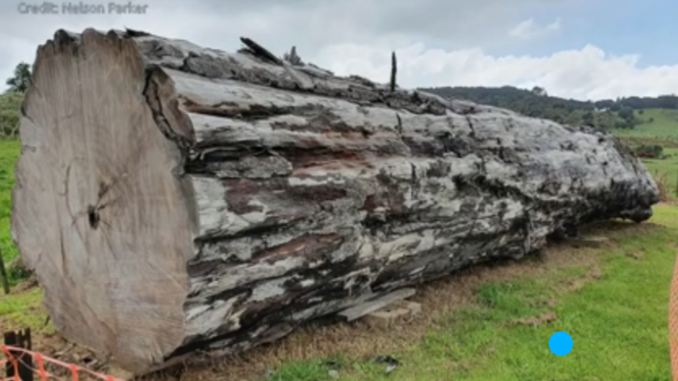
The most recent reversal of Earth’s magnetic field occurred approximately 42,000 years ago. This was the Laschamps Excursion, a short duration reversal of the Earth’s magnetic poles that lasted only 800 years. Long duration reversals can last thousands of years: the last one occurred about 780,000 years ago and scientists have been suggesting for decades that we’re overdue for another. Recent indications that we may be at the beginning of the next reversal include the facts that Earth’s magnetic field has weakend by 9% in the last 170 years, the magnetic north pole has moved dramatically quickly from northern Canada towards Russia in roughly the same time period, and a ‘weak spot’ in the Earth’s electromagnetic field has in recent years appeared in the South Atlantic.
Until recently, it was widely believed pole reversals were no big deal, and that life on Earth would go on uninterrupted and relatively unhindered, but a new discovery has thrown that assumption into doubt.
Massive Kauri trees that lived more than 40,000 years ago have been unearthed in New Zealand. The ancient tree trunks have been incredibly well-preserved by the ground they were buried in, and their tree rings are providing a timeline of environmental events during the Laschamps Excursion. One tree in particular, which was 1,700 years old when it died, lived through the entire excursion, so it provides a complete log of the events (pun intended).
Radiocarbon dating was used to find the age of the tree rings. In addition, a spike in radiocarbon levels was found in tree rings that grew during the Laschamps excursion, indicating that atmospheric radiocarbon levels were higher than normal during the pole reversal. In other words, a collapse of the Earth’s magnetic field occurred during pole reversal, allowing more radiation from the Sun to flood the atmosphere. Using a global climate model which incorporated geological evidence that had been collected previously, the researchers studied what effects the Laschamps Excursion pole reversal had on the atmosphere and the environment 42,000 years ago. Based on the results of their modeling, they believe that the ozone layer was depleted, ultraviolet radiation and atmospheric ionization both increased. Auroras could be seen everywhere at night, not just close to the poles, and supersized electric storms became the new normal weather. They also speculated that caves helped humans survive the increased levels of radiation, and that red ochre was used as a sunscreen as well as for cave wall art. The research paper further speculated that the weakend magnetic field hastened the extinction of megafauna and Neanderthals.
If these researchers are correct, this is an extremely important topic that you’ll want to be well-versed on. To that end here are several relevant videos for your edification.
“Paleopocalypse! – Narrated by Stephen Fry.” (1:42):
“Ancient trees show turning point in Earth history 42,000yr ago.” (1:43):
“42,000-year-old trees allow more accurate analysis of last Earth’s magnetic field reversal” (4:32):
How Do We Know That the Earth’s Magnetic Poles Have Flipped? – Christmas Lectures with James Jackson (5:41):
PBS Space Time “ls Earth’s Magnetic Field Reversing?” (14:12):
Question of the Night: Has life become boring enough for you yet?
